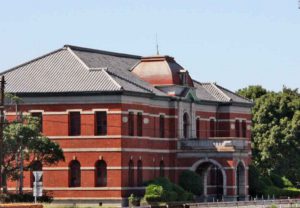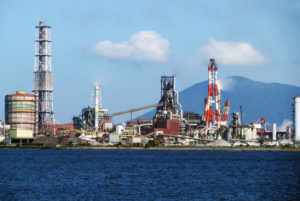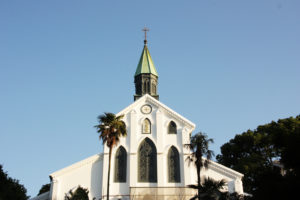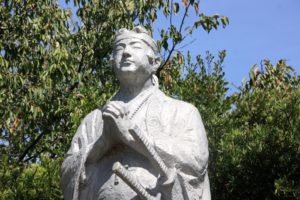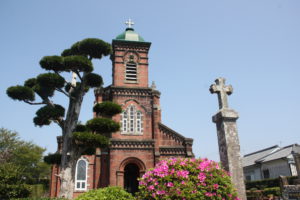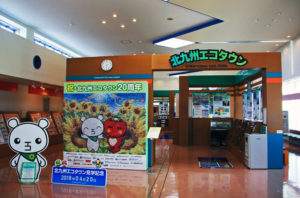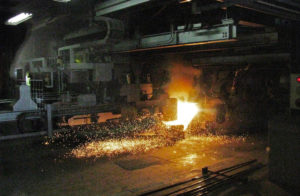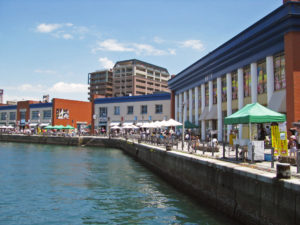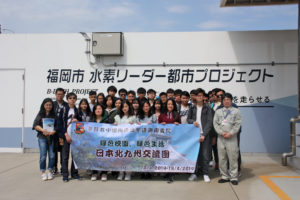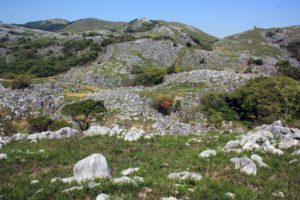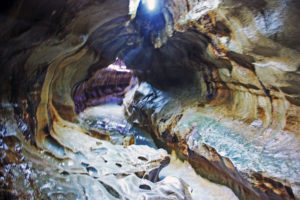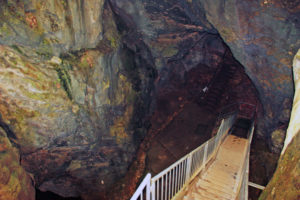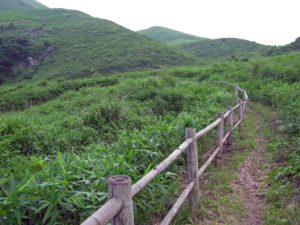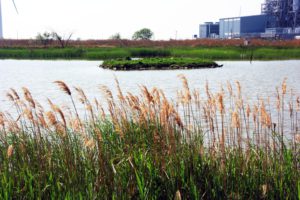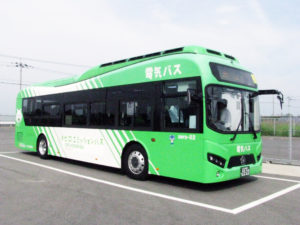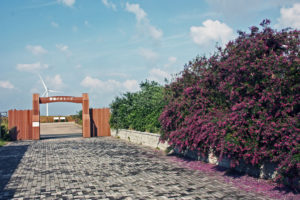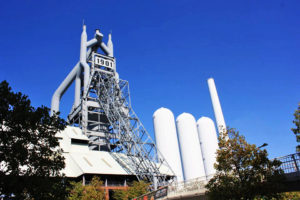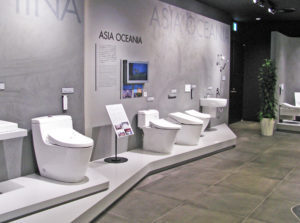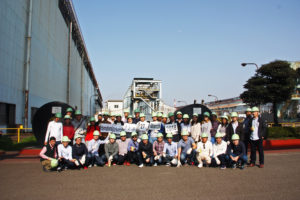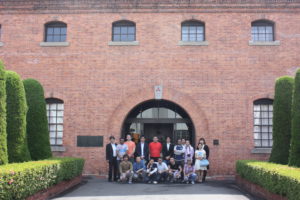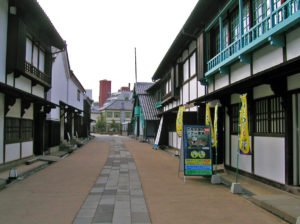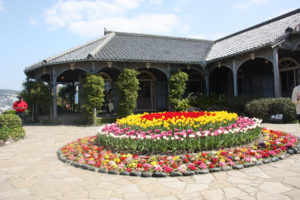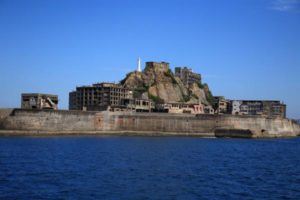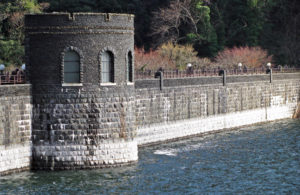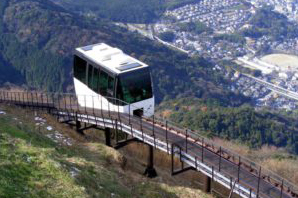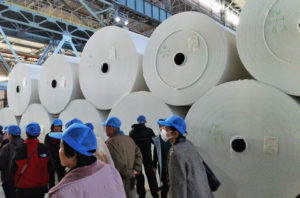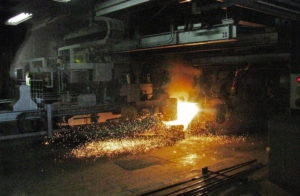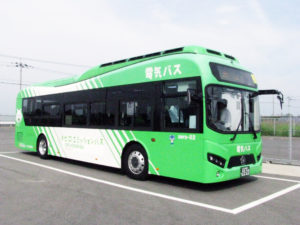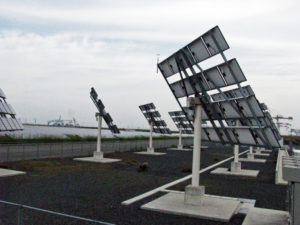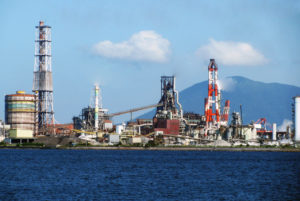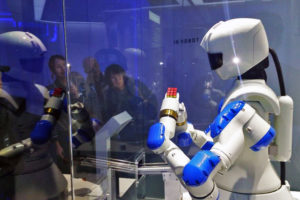Study tours in Kyushu
We are providing the Study tours in Kitakyushu and Nagasaki from the viewpoint
of SDGs.
SDGs (Sustainable Development Goals), otherwise known as the Global Goals, are
a universal call to action to end poverty, protect the planet and ensure that all people
enjoy peace and prosperity and which is a collection of 17 Global Goals.
The Goals to be achieved vary by country and region and the solutions and difficulty
to reach the Goals also differ. Kitakyushu and Nagasaki are the best places of SDGs.
Because the histories, current environmental leadership and further plans of those
areas are related to all 17 Goals, therefore the solutions for each participant can
be found.
What to learn
Solid waste management & Recycling / Kitakyushu-city
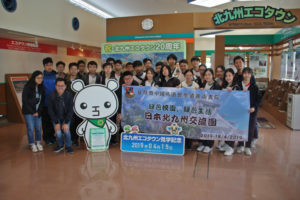 |
Kitakyushu-city is the advanced city of Solid waste management in Japan. Comprehensive solid waste management system can be learned from waste colleting procedure at household to the final stage of waste treatment such as incineration, landfill and recycling. |
Low Carbon Society / Kitakyushu-city
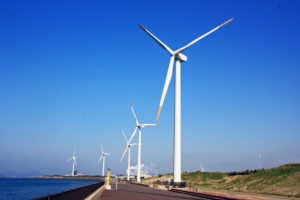 |
The city is promoting the Low Carbon Society in Asia while taking leadership as the Environmental Future city. The new generation technologies and the activities cooperated with Citizen to achieve Low Carbon Society can be learned. |
Industrial modernization & KAIZEN strategy / Kitakyushu-city
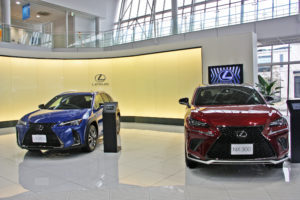 |
Japanese industry at the end of 19th century was 200 years behind. Since Japan’s modern Steel Industry operation commenced in 1901 in Kitakyushu, Japan became the world’s leading industrialized country in only 100 years. There is the KAIZEN strategy in the background to Japan becoming an industrialized country at a rapid speed. |
UNSCO World Herigate / Japan’s Meiji Industrial Revolution
Steel Industry Heritages in Kitakyushu-city and Ship building and Coal Industry Heritages in
Nagasaki ; those Heritages show the history of Japan’s Industrial modernization.
The unique testimony to the tradition of people and their communities who secretly
transmitted their faith in Christianity while surviving in the midst of the conventional
society and its religions during the time of prohibition.
Solid waste management tour in Kitakyushu
Kitakyushu-city is the advanced city of solid waste management in Japan. The comprehensive
Solid waste management system and Recycling technologies can be learned from waste
collecting procedure at household to the final stage of waste treatment such as incineration,
landfill and recycling.
What to learn
Comprehensive Solid waste management system and Recycling technologies
Tour conditions
The tour is the tailor-made study tour exclusively for your group
Number of participant : from 5 to 40
Tour duration : 2 days ( one-day tour can be arranged if required )
Study tour planning and arrangement :
Tour guide and interpreter (English ) : Japan KYUSHU Tourist
Transportation : a chartered vehicle
Itinerary
Day 1
8:30 leave hotel in Kitakyushu
Hiagari Recycling Center for waste cans and bottles
lunch
Plastic PET Bottle recycling / Nishi-Nippon PET Recycling
Citizen community Center
17:30 arrive Hotel in Kitakyushu
Day 2
8:30 leave hotel in Kitakyushu
Waste paper recycling / Kyushu Seishi
Lunch
Melting Furnace / Sin-Moji Plant
Sightseeing Mojiko Retro
17:30 arrive Hotel in Kitakyushu
Option : the following sites can be arranged as an option.
Where to visit and what to learn
Day 1
Hiagari Recycling Center for waste cans and bottles
 |
The Recycling Center where separates cans, bottles and PET bottles collected in Kitakyushu-city for recycling. And also paper containers and Styrofoam food packs are separated at this facility. |
Plastic PET Bottle recycling / Nishi-Nippon PET Recycling
 |
PET (polyethylene terephthalate) bottles are sorted by municipalities and recycled into pellets and flakes, which can be used as raw materials for polyester fibers and egg cartons. |
Citizen community Center
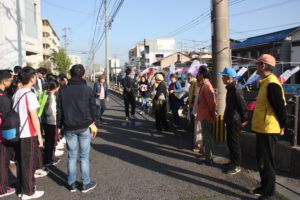 |
Introduce the Duties of Citizen and Self-government organization for recycling & waste management. |
Day 2
Waste paper recycling / Kyushu Seishi
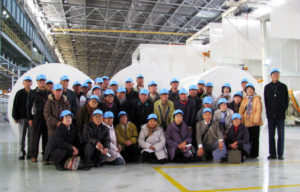 |
Refined waste papers is recycled into toilet papers. Sludge generated during the toilet paper production process is used to produce a foaming inhibitor used by steel works.
|
Melting Furnace / Sin-Moji Plant
Options
Home Our Services About us Contact us Terms and Conditions Privacy Policy
History of Industrial modernization
Japanese industry at the end of 19th century was 200years behind. After Mathew C Perry
came to Japan in 1853, Japan’s industrial Revolution was started.
Since Japan’s modern Steel Industry operation commenced in 1901 in Kitakyushu,
Japan became the world’s leading industrialized country in only 100 years.
 |
 |
 |
There is the KAIZEN strategy in the background to Japan becoming an industrialized country at a
rapid speed. The literary meaning of KAIZEN is improvement, refer to activities that continuously
improve all the functions applies to manufacturing process, purchasing and logistics, involve all the
employees form top management to site workers. KAIZEN is applied for many companies in Japan
and is greatly contributed to Japan’s Industry.
・1641 Dejima, a small artificial island was opened as Dutch trading port in Nagasaki
Nagasaki is the only place opened to oversea countries during the National isolation period
from 1639 to 1854.
・1853 Mathew C Perry came to Uraga;
the Commodore of the US navy, who played a significant role in Japanese history,
succeeded in opening Japan to foreign countries Japanese industry was 200years
behind European countries at that time
・1853 Japanese’s industrial revolution started in Saga, Kagoshima and any other places
・1867 The sovereignty of Tokugawa Shogunate was returned to imperial court
・1868 Meiji Restoration
the most important event in Japanese history, which heralded a new era of modernization
in Japan. This revolution restored the imperial rule to Japan after more than 250years of
Tokugawa Shogunate, bringing about a major shift in political and cultural structure.
National Slogan was Fukoku-kyohei, means “Enrich the country and strengthen the military”
to promote industries and strengthen Japan against Western power.
・1897 The Meiji Government made the decision to build the Imperial Steel Work in the small village
in Higashida, Yahata, next to the Dokai Bay and close to the coal-rich Chikuho area
・1899 First Head Office of the Imperial Steel Works registered on the World Heritage was built
・1900 The Former Forge Shop and the Repair Shop of the Imperial Steel Works registered
on the World Heritage were built
・1901 Operation of the Imperial Steel Work, in Yahata was commenced
In the beginning of the Blast Furnace was not successful, and then Japanese engineer
Kageyoshi Noro modified the design and successful operation followed in 1904
・1915 Yaskawa Electric establish in Kitakyushu
・1917 TOTO establish in Kitakyushu
・1945 The Atomic bombs were dropped in Hiroshima on August 6 and in Nagasaki on August 9
・1960’s Experience the industrial pollution problems
・1962 Higashida No.1 Blast Furnace 10th was blown in
・1963 Kitakyushu-city was born, five municipal cities ( Moji, Kokura, Yahata, Wakamatsu and
Tobata) were equally merged; that was a very rare case in the world as each the cities
had such different personality
・1972 Higashida No.1 Blast Furnace 10th was blown off late 1980s’ the structural flaw in
Japanese economy came to the surface and culming in collapse of bubble economy
・1990 Kitakyushu-city received the “Global 500 Award” given by the UN Environment Program
(UNEP) to individuals and organizations that combat environmental issues, and it was
first local government to win the award in Japan.
・2001 Kitakyushu Eco-Town Center opened first in Japan
・2008 Kitakyushu-city was designated as the Environmental Model City
・2011 Kitakyushu-city was designated as the Environmental Future City
・2015 Site of Japan’s Meiji Industrial Revolution is registered on the list of World Cultural Heritage
Related sites to the Study tour
Study tour in Kitakyushu Study tour in Nagasaki History of Industrial modernization
History of Japanese Christianity Environmental Future city Kitakyushu
Home Our Services About us Contact us Terms and Conditions Privacy Policy
Geography learning in Kitakyushu-city
Geography is a field of science devoted to the study of the lands, features, inhabitants,
and phenomena of Earth. Kitakyushu has unique geographical features, therefore Earth
and its human and natural complexities and also how they have changed and come to
be can be learned.
Hiraodai Limestone Caves
There are three limestone Caves in Hiraodai Karst and each cave has different unique feature.
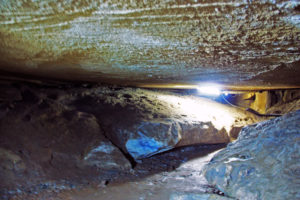 |
It is the longest cave in Hiraodai Karst, over 2 km in length. The highlight of this cave is the monolithic ceiling which is a very unique structure as a limestone caves. |
Map of Kitakyushu
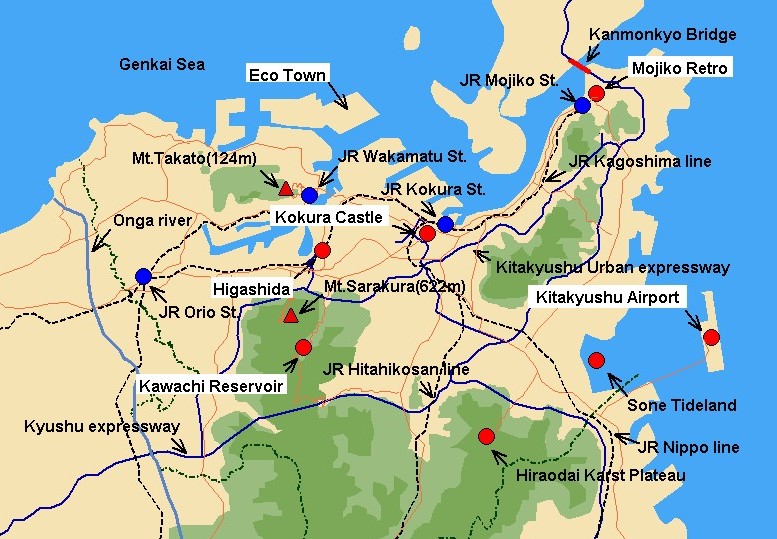
Low Carbon Sosiety tour in Kitakyushu
Kitakyushu-city is promoting the low carbon society in Asia while taking leadership as the
Environmental Future City. The new generation technologies and the activities cooperated
with Citizen to achieve low carbon society can be learned.
Tour conditions
The tour is the tailor-made study tour exclusively for your group
Number of participant : from 5 to 40
Tour duration : one-day
Tour guide and interpreter (English ) : Japan KYUSHU Tourist
Transportation : a chartered vehicle
Itinerary
8:30 leave hotel in Kitakyushu
Zero Emission Transportation System
lunch
Kyushu Electric Power / Shin-Kokura Plant
Citizen community Center
17:30 arrive Hotel in Kitakyushu
Option : the following site can be arranged as an option.
Where to visit and what to learn
Zero Emission Transportation System
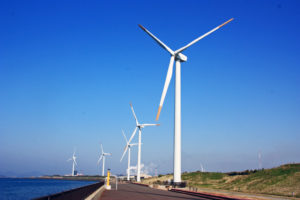 |
Japan’s first Wind power generation plant constructed at the coast line facing windy strong Hibikinada sea. 10 wind power generators line up and total generation capacity is 15,000kw. |
Kyushu Electric Power / Shin-Kokura Plant
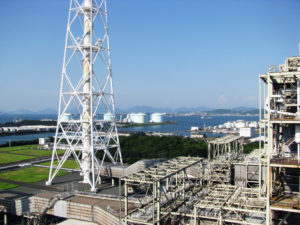 |
Kyushu’s first thermal power plant used LNG and power generation capacity is 1,800,000kw. Generation of electricity process can be learned by visiting the turbine room, control room and boiler plant. |
Citizen community Center
 |
Introduce the Duties of Citizen and Self-government organization for making Low Carbon Society. |
Option
Home Our Services About us Contact us Kyushu Travel Guide
Japan’s KAIZEN Strategy tour in Kitakyushu
KAIZEN is one of the most important key word for Japan’s Industrial modernization and
world leading industries.
KAIZEN is the Japanese word for “improvement”. In business, KAIZEN refers to
activities that continuously improve all functions and involve all employees from the CEO to the
workers on site. It also applies to processes, such as purchasing and logistics, that cross
organizational boundaries into the supply chain.
Tour conditions
The tour is the tailor-made study tour exclusively for your group
Number of participant : from 5 to 40
Tour duration : one-day
Tour guide and interpreter (English ) : Japan KYUSHU Tourist
Transportation : a chartered vehicle
Itinerary
8:30 leave hotel in Kitakyushu
lunch
17:30 arrive Hotel in Kitakyushu
Where to visit and what to learn
The options
The following companies related to KAIZEN strategy can be included as option.
Nippon Steel / Yawata Works
Nagasaki / UNESCO World Heritage one-day tour
The origin of Japan’s modernization is here. Under the growing sense of crisis over a foreign
menace, Nagasaki supported the introduction of Western countries technology, which started
during the last years of Japan’s National isolation period. With “ Dejima ” as the only window
to West during the period of National isolation.Nagasaki has contributed to Japan’s modernization
by serving as a place to acquire knowledge from oversea. Nagasaki contributed for Shipbuilding
and Coal Mining and 7 sites have been registered on the UNESCO World Heritage,
Sites of Japan’s Meiji Industrial Revolution.
This tour introduces how Nagasaki contributed to industrial development and japan a chieved
industrial modernization with unprecedented speed in the world, while visiting the World heritage
sites.
Tour conditions
The tour is the private tour exclusively for your group.
・Minimum number : 2 person
・Maximum number : 30 person
・Tour date : please specify the date
・English speaking tour attendant escorts your journey to produce a pleasant trip.
・Chartered vehicle is utilized as per number of person.
Itinerary
8:00 Depart Fukuoka-city
Transfer to Nagasaki-city using Kyushu Expressway and Nagasaki highway, 2hours
Explore UNESCO World Heritage sites in Nagasaki-city
Visit Former Pattern Shop / Shipyard History Museum
See the Giant Cantilever Crane from a bus window
Lunch at Nagasaki Wharf
Visit Dejima
Visit Glover Garden
Transfer to Fukuoka-city using Nagasaki Expressway and Kyushu Expressway, 2hours
18:00 Arrive at Fukuoka-city
Where to Explore
Former Pattern Shop / Shipyard History Museum / UNESCO World Heritage
Giant Cantilever Crane / UNESCO World Heritage
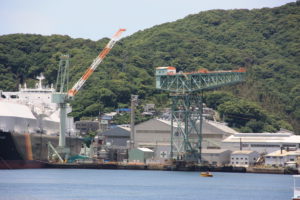 |
The Giant Cantilever Crane is the first electric-powered crane of its type in Japan, imported from Scotland in 1909, which is the oldest surviving one in operation in the world. It can still lift a load of 150 tons and is used to ship heavy goods. |
Nagasaki Wharf / lunch
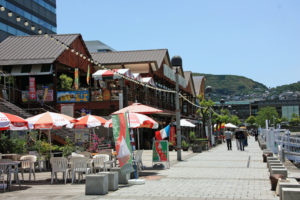 |
Elegant international & domestic tourist harbour. Made up of around 20 unique shops and restaurants lined up at the water front, offering various choices such Japanese, Western, and Italian cuisine, to beauty salons, outdoor shops and more. It is quite the popular spot for people who want to relax while viewing the sea beyond as they dine outdoors. |
Glover Garden / UNESCO World Heritage
Option
Hashima Coal Mine / Gunkan-jima island cruise
Map of Nagasaki
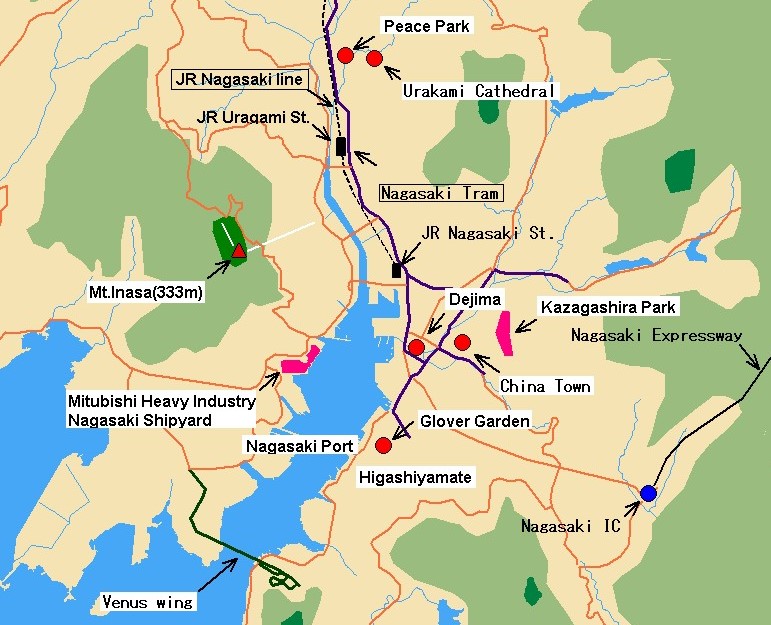
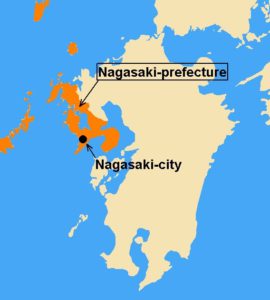
Gunkan-jima island cruise
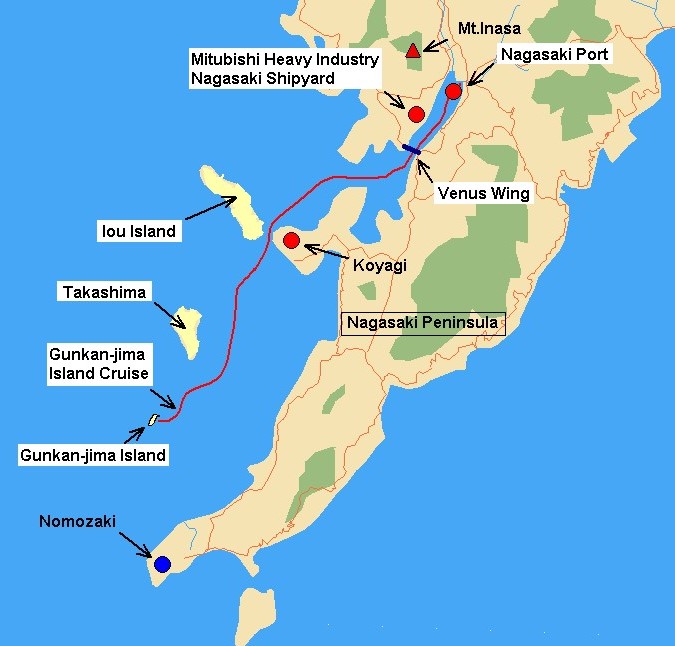
Home Our Services About us Contact us Kyushu Travel Guide
Japan’s Industrial modernization tour in Kitakyushu
This tour Introduces how Japan has become the world’s most industrialized country in the short
period. Japanese industry at the end of 19th century was 200years behind. After Mathew C Perry
came to Japan in 1853, Japan’s industrial Revolution was started. Since Japan’s modern Steel
Industry operation commenced In 1901 in Kitakyushu, Japan became the world’s leading
industrialized country in only 100 years.



Under construction Operation start in 1901 Now 2021
Tour conditions
The tour is the private tour exclusively for your group.
・Minimum number : 2 person
・Maximum number : 30 person
・Tour date : please specify the date
・English speaking tour attendant escorts your journey to produce a pleasant trip.
・Chartered vehicle is utilized as per number of person.
Itinerary
8:30 leave hotel in Kitakyushu
UNESCO World Heritage The First Head Office of the Imperial Steel Works
lunch
Nippon Steel / Yawata Works company visit
17:30 arrive Hotel in Kitakyushu
Option : the following sites can be arranged as a option.
Where to visit
The First Head Office of the Imperial Steel Works / UNESOC World Heritage
Nippon Steel / Yawata Works
Option
Study tours in Kitakyushu
Kitakyushu-city is the World leading Environmental Future city, and blessed with spectacular
and stunning nature. The city is the Industrial Innovation city greatly contributed to Japan’s
Industrial modernization since Japan’s modern Steel Industry operation commenced in Hitashida
in 1901.
Now Kitakyushu-city offers the various kind of Study tour such as Environment, Solid Waste
management, Industry, Science, Geography, Architecture, Economy as well as SDGs.
Our Study tour is offered as a package tour exclusively for your group.
Included items
・Making the Study tour planning
・Arrangement of visiting places
・Tour guide and interpreter
・Transportation such as Chartered vehicle
・Accommodations
・Meals ( Japanese cuisines and local delicacies )
Where to learn
We are offering various type of study tour utilizing the following learning resources, environment
and historical aspects. Feature of our study tour is the tailor-made in accordance with customer
requirement of learning.
Solid Waste management & Recycling
Kitakyushu-city is the advanced city of Solid waste management in Japan.
Comprehensive solid waste management system can be learned from waste collecting procedure
at household to the final stage of waste treatment such as incineration, landfill and recycling.
The city is promoting the low carbon society in Asia while taking leadership as the Environmental
Future City. The new generation technologies and the activities cooperated with Citizen to achieve
low carbon society can be learned.
|
|
Industrial modernization & KAIZEN strategy
Japanese industry at the end of 19th century was 200 years behind. Since Japan’s modern
Steel Industry operation commenced in 1901 in Kitakyushu, Japan became the world’s leading
industrialized country in only 100 years. There is the KAIZEN strategy in the background to
Japan becoming an industrialized country at a rapid speed.
There are a lot of Museums and facilities where Science, Technology, Engineering and
Mathematics can be learned.
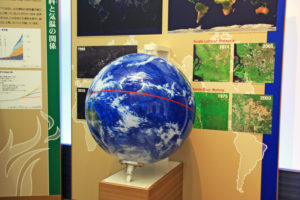 |
 |
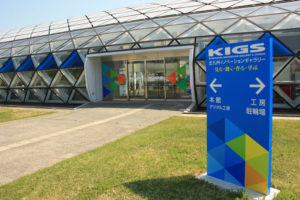 |
UNESCO World Heritage of Japan’s Meiji Industrial Revolution
The four sites of Yawata Steel Works in Kitakyushu area have been inscribed as Iron and
Steel Industry. The buildings of The Imperial Steel Works, Japan at Yawata Works of
Nippon Steel are the surviving components of Asia’s first successful integrated iron and
steel works.
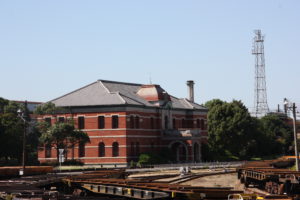 |
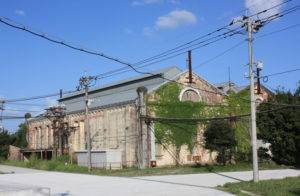 |
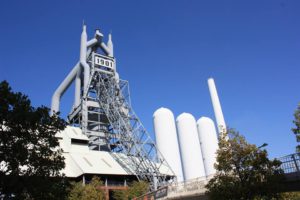 |
There are a lot of unique construction designed by renowned architects and civil engineers,
that were constructed beginning of Japan’s Industrial modernization. The design philosophy
of designers focused on the future can be learned.
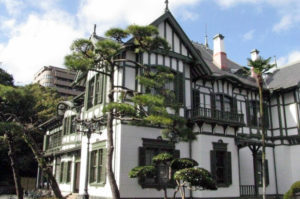 |
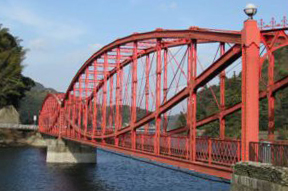 |
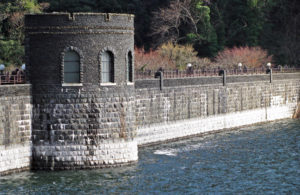 |
Geography is a field of science devoted to the study of the lands, features, inhabitants, and
phenomena of Earth. Kitakyushu has unique geographical features, therefore Earth and its
human and natural complexities and also how they have changed and come to be can be learned.
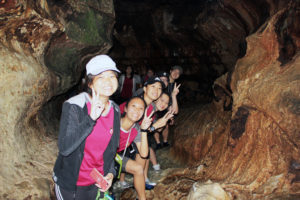 |
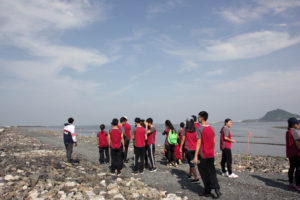 |
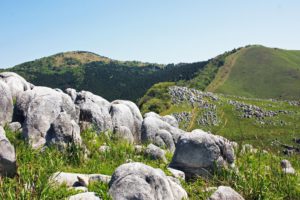 |
Related sites to the Study tour
Study tour to Kyushu Study tour in Nagasaki History of Industrial modernization

STEM Education field / museums and learning facilities
Fukuoka-prefecture including Kitakyushu-city have various kind of Museums and facilities
and a lot of things can be learned. The Kitakyushu-city is the birthplace of the modern
Japanese steel industry which began operation in 1901, and is now the world’s leading
environmental future city after overcoming serious environmental pollution while it contributed
greatly to Japan’s industrial development. Now it is called industrial and environmental city
which is representative of Japan.
Kitakyushu Manga Museum and Aru Aru City
The Kitakyushu Manga Museum is located next to JR Kokura station. The museum is located
on the 6th floor of Aru Aru City, a multi-floored shopping mall devoted to products and services
for anime, manga, idol culture, and cosplay fans, a kind of Harajuku in miniature.
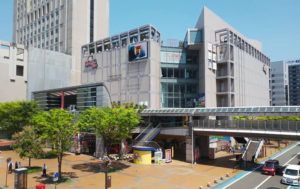 |
 |
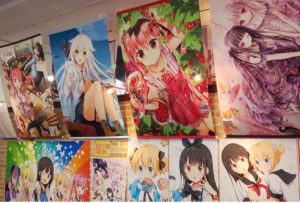 |
The Environmental learning facility which has Environmental learning function, Environmental
information function and Environmental activity function. The Environmental improvement
history of Kitakyushu, Global warming and other various environmental issues can be learned.
The Eco House proposes an energy-saving lifestyle at home. It is made environmentally friendly,
such as blocking & heat insulation structure and improving ventilation by ingenerating the
arrangement of windows.
Kitakyushu Museum of Natural History & Human History
The largest scale Museum in Western Japan for Natural history and Human history located
in Higashida district.
It is a railway theme park organized by JR Kyushu, showing the history of Kyushu Railways.
Consists of 3 areas; main building, train exhibition hall and mini railroad park. The main building
has diverted from the original Kyushu Railway Headquarters red brick building built in 1891.
The learning facility for ecology of Firefly. The activities for protecting fireflies have been continued
for over 30 years by citizens in Kitakyushu-city. The museum was established as a facility that
supports activities related to preservation of the natural environment, learning and research on fireflies
and other waterside creatures and their habitats.
 |
 |
 |
The learning facility of the water environment. You can see and feel the Nature from the view point
of fishes, birds and insects at the experience corner. There are ecology tanks, you can learn about
the river and the environment. And also there is the huge River observation window with 2.3 metre
high and 7.2 metre wide, You can observe River creatures and fishes as well as Seawater fishes.
 |
 |
 |
Yame is the Centre of Japanese artificial crafts. The Museum was built in 1986 with the purpose of
gathering traditional craft items together and transferring traditional techniques and development of
local industry.
 |
 |
 |
Fukuoka Citizens’ Disaster Prevention Center
The Center has been built to enable citizens to actually experience various types of disasters and
obtain information on how to handle these disasters.






